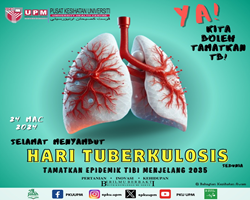What is Occupational Acne?
Occupational acne is an inflammation of the glands (the sebaceous glands) that produce oil to lubricate the skin. The inflammation occurs when certain chemicals block the pores of the skin causing accumulation of the oil and formation of a skin protein called keratin. The accumulation of the oily substance and the formation of keratin produce black plugs that mark occupational acne.
Three different groups of chemicals are known to cause three different forms of acne:
Group 1 - petroleum and its derivatives, especially all compounds found in crude oils, cause oil acne; cutting oils, metalworking oils.
Group 2 - certain coal-tar products cause coal-tar acne.
Group 3 - halogenated aromatic compounds, like polychlorinated biphenyls, cause chloracne.
|
Table
Causes of occupational acne based on group of occupations
|
|
Agent
|
Type of Acne
|
Occupational Group
|
|
Petroleum and its derivatives:
Crude oil and fractions
Cutting oils
|
Oil acne
|
Machine-tool operators, mechanics, workers exposed to petroleum and its derivatives
|
|
Coal-tar products:
Coal tar oils
Pitch
Creosote
|
Coal-tar acne
|
Coal-tar plant workers, construction workers, roofers, road paving workers, wood preservation workers
|
|
Halogenated aromatic compounds:
Chloronaphthalenes
Polychlorinated biphenyls (PCBs)
Polychlorinated dibenzofurans (PCDFs)
Polychlorinated dibenzo-p-dioxins (PCDDs) for example 2,3,7,8-Tetrachlorodibenzo-p-dioxin (TCDD)
3,4,3',4'-Tetrachloroazoxybenzene (TCAOB)
3,4,3',4'-Tetrachloroazobenzene (TAB.)
|
Chloracne
|
Chemical manufacturing workers, laboratory workers, maintenance workers, waste handling workers, workers in different industries using certain halogenated hydrocarbons
|
What Causes Oil Acne?
Grease and petroleum-based cutting oils cause oil acne. Blisters and small spots in areas where oil exposure is heavy, such as the arms and hands, mark oil acne. But other areas such as the abdomen and thighs may be affected especially if they are covered with oil-soaked clothes. The obstructed pores of the skin develop plugs formed by the oil and keratin which the presence of air turns black.
People with oil acne should see a physician. Without treatment, the condition may persist for months after the exposure to oil stops. Skin lesions caused by repeated exposure to petroleum products, if not treated properly, may develop over a long period into skin cancer.
The features associated with oil acne include darkening of the skin and an abnormal reaction of the skin to sunlight. Darkening of the skin is caused by excessive production of the pigment melanin. It occurs mainly on sites that are heavily exposed to cutting oils and are simultaneously exposed to sunlight. It occurs because of exposure to a chemical alone and also depends on the presence of sunlight, which can make some chemicals more toxic.
What Causes Coal-tar Acne?
Coal-tar products cause coal-tar acne. The chemical reaction between oily substance and keratin form the black plugs that mark coal-tar acne. These plugs are typically found around the eyes. In general, coal-tar acne clears rapidly but in some cases it may persist long after the exposure stops. People with coal-tar acne may experience skin darkening. They also may report burning sensations and flushing of the skin after exposure to light. As with oil, the skin lesions caused by exposure to coal-tar products, if not treated properly, may develop into skin cancer.
What Causes Chloracne?
Exposure to various halogenated aromatic compounds causes chloracne. The oily substance and keratin form the yellow cysts and gray plugs that mark chloracne. The skin lesions occur mainly in the face, but in more severe cases they involve the shoulders and chest, the back, and the abdomen. In the most serious cases, the lesions appear also on the arms, thighs, legs, hands and feet. Direct skin contact is the most common way of developing chloracne. Chloracne can develop from three to four weeks after exposure and it may last up to fifteen years even if exposure stops.
The complications associated with chloracne include liver disease, bronchitis, nausea, vomiting, and diarrhoea. There is also a poisonous effect on the nervous system resulting in symptoms such as headache, fatigue, irritability, sweating of the palms, and numbness in the legs.
How Can We Prevent Occupational Acne?
Occupational acne can be avoided by measures such as elimination, engineering controls, personal hygiene, and personal protection.
Eliminating contact with the product will prevent disease. Where possible, workplaces should substitute hazardous substances to non-hazardous substances.
Engineering controls are important to reduce exposures. Enclosing processes separates workers from the harmful substances with which they work. Using adequate local exhaust systems avoids direct skin contact and inhalation. Using well-designed spray apparatus reduces splashes of harmful substances.
Administrative controls include education and training about the hazards of the products, personal hygiene, and methods to reduce exposure (e.g., job rotation). Personal hygiene, including hand washing, is very important to prevent occupational acne. Workplaces should provide change rooms, showers and bath facilities, and workers should wear clean coveralls daily.
Personnel protection includes splash goggles, gloves, apron, and so on, as required by the task and the chemicals being used. Make sure that they are properly selected because not all protective clothing provides protection against all substances.
Workers should review the Chemical Safety Data Sheets (CSDSs) which provide information on health effects of exposure and safe use of the product. Workers should also ensure that substances used at work are properly labelled and that they know how to work safely with the products.
Prepared by :
Dr Arma Noor
Occupational Health Services
References
https://www.ccohs.ca/oshanswers/diseases/acne.html
Date of Input: 18/07/2022 | Updated: 20/07/2022 | nur_hazalina
MEDIA SHARING




























